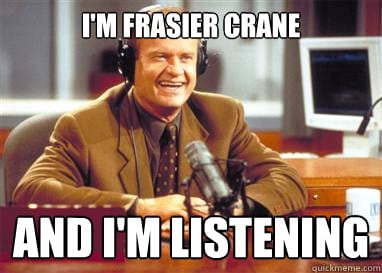Field
The Power of Relational Canvassing
February 21, 2019
3 min

Have you ever had a knock at your door, opened it, and found a person with a clipboard on the other side?
Did this person ask you a couple of questions in a hurried manner?
Hurling hasty facts about a candidate at you?
Snatching short answers from you while scribbling on the clipboard, only to rush to your neighbor’s door to rinse and repeat?
If so, then you fell victim to transactional canvassing. Similar to going to a store to exchange money for goods, transactional canvassing is, ‘hand me your vote, and I’ll hand you a candidate, okthxbai!”
Well, just like we have fewer horses and bayonets because the nature of today’s military has changed, we have fewer transactional canvassing occurrences because the nature of today’s political campaigning has changed.
We now employ relational canvassing.
Relational canvassing is building capacity for long-term power. It’s the foundation of organizing – creating relationships. We can do this at the doors during canvassing because we have a tightly scripted frame and well-trained canvassers.
Framing the Conversation
Just like a frame keeps its contents contained, relational canvassing keeps the contents of the conversation contained to what the voter cares about.
We discover what the voter cares about because a key relational canvassing component is listening:
- Listening to the voter’s concerns
- Recording accurate data
- Reflecting the voter’s words back in order to arrive at a complete understanding of the voter
These elements are critical to establishing the relationship between the voter and the campaign. Relational canvassing has a higher conversion rate, better contact rates, and is proven to turn out more voters to the polls. The lasting impression of a real conversation versus a transactional one is memorable and builds the base for future power.
The Conversation
Now, a conversation at the door may resemble this:
“Hello, Ms Voter! I’m Chuck, and I’m out talking to your neighbors about the current administration. On a scale from 0-10, zero being not at all, and 10 being highly supportive, how do you feel about [person currently serving in targeted office]?”
After hearing the number, then the spark to the conversation is the follow-up question,
“Why that number? Why not [lower number]?”
This type of follow-up is important because it forces the voter to put context to the rating. This gives us great insight into what they care most about and are willing to advocate for in their community.
Asking in the opposite manner, why not a higher number, puts the voter on the defensive – something we want to avoid.
Okay, let’s pause to recap:
- We knocked on Ms. Voter’s door
- We asked questions
- Listened to the response
- Reflected their commentary after our follow-up spark question to arrive at an understanding of the voter’s concerns for her community
Our next step is to share a brief story in an attempt to generate support for our candidate or cause.
This story has to be a story that directly relates to the voter’s concerns, and can be a personal story or a story we are familiar with. We NEVER make up stories, because we lose authenticity, and that tends to break down relationships.
How’d We Do?
How will we know if we are effective in sharing our story? We ask the scale question again (“On a scale from 0-10…), and if the number moves IN OUR FAVOR, we have succeeded in building capacity for our candidate or cause.
All of this is possible because we are, like Frasier Crane, listening.

To truly become a canvassing expert, take our Targeting Voters online course today!

The training and tools you need, when you need them. Courses are available 24/7. Are you a candidate, campaign staffer or volunteer, at the beginning stages of your campaign or in the home stretch? We have the courses to address your specific needs and arm you with the knowledge to win.
View course catalogNot sure where to start? Take a short quiz to help you determine the best place for you to get started.

